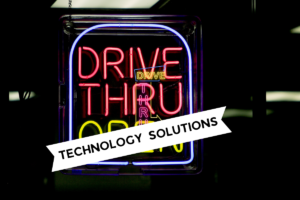Food waste is the elephant in the room for the restaurant industry. Inconsistent inventory management, incorrect orders, lousy forecasting, and quiet periods all contribute to food waste, not to mention the packaging that gets thrown away.
Your QSR is probably pretty energy-heavy (after all, you always need to keep the lights on and the kitchen running). On a broader scale, the global food system accounts for over a third of human-linked greenhouse gas emissions, meaning that sustainability should be a top priority for business owners worldwide.
So, do your diners really care about your ESG (environmental, social, and governance) standpoint? The statistics say ‘yes.’ 78% of customers say a sustainable lifestyle is important to them, and eco-conscious customers are willing to pay a 10% premium price to eat at sustainable restaurants.
It’s easy to get started on your ESG journey. Let’s look at what restaurant sustainability is, its benefits, and simple tips to help you.
What is restaurant sustainability?
Sustainability means preserving natural resources and being conscious of your impact on the environment and others. The restaurant industry produces a massive amount of waste and is very resource-intensive, including food and energy consumption. In fact, food production is responsible for 70% of all water extracted from the Earth. So, being eco-conscious often means addressing where your QSR can cut consumption and waste across your supply chain, from farming to food production (and everything in between).
There are four pillars of sustainability:
- Social: Having a positive impact on communities and cultures by investing in things like education, welfare, and healthcare.
- Human: Creating a better livelihood for the people producing your goods or services.
- Economic: Maintaining capital and business growth while improving sustainability practices.
- Environmental: Protecting the environment by conducting business without harming natural resources.
What are the benefits of focusing on sustainability?
Here are many reasons why you should consider taking a stand on sustainability.
- Cost savings: Over half of customers would pay between 30% and 40% premium for sustainably produced food products. Plus, food waste will cost $1.5 trillion in squandered revenue annually by 2030.
- Long-term viability: Businesses with high ESG ratings outperform the market in short (3-5 years) and long (5-10 years) terms, and 47% of diners would consider changing what they choose from the menu to be more sustainable.
- Contribution to the community: 68% of customers think restaurants should have measures to avoid unnecessary food waste.
- Enhanced brand reputation: There’s a positive correlation between ESG-focused brands and customer loyalty, and 56% of diners want restaurants to be more transparent about their sustainability efforts.
11 Simple Tips to Increase Your Restaurant Sustainability
Taking the first step in your sustainability journey is easy with these simple and small tips.
1. Recycle food scraps and waste
The US restaurant industry wastes 11.4 million tons of food every year. As well as cost savings, reducing food waste helps you do your bit for the environment and society.
Overproduction, incorrect orders, and spoilage contribute to food waste, and you can mitigate it by using inventory management software and a POS to accurately track and predict orders and stock levels.
2. Donate to the local community
Eliminating waste entirely is difficult, but you can connect with local food banks, charities, homeless shelters, and schools to pass perfectly good food to those in need. It’s important to identify items and produce that is fresh, untouched, and ideally in the original packaging. Giving back to the community helps you fulfill social and human sustainability pillars.
3. Grow your own produce
Okay, it’s not possible to grow a burger tree or a fries bush. But you can invest in farmland for your business, and there are opportunities to turn agricultural production into a community initiative by inviting local schools to participate. If it’s not possible to grow your own produce, you can partner with local farmers and businesses to ensure the food you use is responsibly sourced.
4. Introduce seasonal products into your menu
59% of customers say they’re more likely to purchase a menu item if it’s described as ‘seasonal.’ Just think of the success of Starbucks’ Pumpkin Spice Latte or McDonald’s limited edition McFlurries.
Seasonal products keep your menu offerings exciting and fresh and help your QSR be more sustainable. After all, transporting non-local and out-of-season food worldwide uses high amounts of CO2.
5. Make small changes along the way
The little things go a long way in your sustainability journey. For example, 7.5 million plastic straws pollute US coastlines, so switching to paper or reusable straws can make a huge difference. Keeping equipment like fryers in good condition also helps reduce the likelihood of needing a replacement.
6. Get all your staff involved
74% of employees say their job is more fulfilling when they’re given the oppertunity to positively impact social and environmental issues. You can engage your staff by defining your QSRs sustainability strategy, appointing environmental ambassadors, and running incentives. For example, all your staff might volunteer one day per year for a local sustainability cause, which also helps team bonding and engagement.
7. Incorporate vegan or vegetarian dishes
Livestock accounts for 11% of emissions caused by humans. Adopting new technology like methane-reducing feed will help cut emissions by 19% by 2030, and switching to vegan and vegetarian options can help reduce land use and emissions. The alternative meat section will grow to $17 billion in 2026, so there’s clear demand.
8. Install energy-saving systems and appliances
From LED lighting to auto-standby appliances, you can reduce energy consumption in your QSR in many ways. Firstly, you can begin by conducting an energy audit to assess your current usage, switching to efficient modern equipment, and remembering to turn everything off at night.
9. Green cleaning
Green cleaning has been a top trend on social media in recent years, and industrial businesses are jumping on the bandwagon. Sustainable cleaning products usually use plastic-free packaging and are sold in a condensed form, so you add water when you’re ready to use it. This helps keep supply chain and production emissions low.
10. Water conservation
All the above tips contribute to water conservation at different stages in the supply chain, helping your QSR save money and usage. You could consider your water usage during food production and preparation, delivery, and cleaning; reduction is often an easy fix. For example, you could choose low-flow valves with automatic shut-offs, use energy-efficient appliances, and upgrade your recycling program.
11. Sustainable packaging
You can discuss packaging options with your suppliers, who might suggest simple production changes to replace plastic with sustainable alternatives or reduce the amount of packaging altogether. No matter what packaging you use, you can also prioritize recycling to ensure your QSR contributes to a circular economy.
Automate, Optimize, and Improve Efficiency with Auto
Whether you plan a business-wide sustainability strategy or decide to make the first small change, every little helps your QSR progress in ESG initiatives. In this post, we discussed eleven easy ways to do your bit for the environment and why it’s important to do so.
Technology can help the restaurant industry reduce energy consumption and eliminate waste by providing better monitoring and predictive capabilities. For example, self-serve kiosks enable customers to choose their own meals, reducing the likelihood of incorrect orders that go to waste.
Voice ordering solutions like Auto integrate with your POS to ensure your supply chain operations are efficient and accurate, which helps you predict your sales and inventory management and reduce food waste in the process. Get started with Auto today to improve your QSR.





